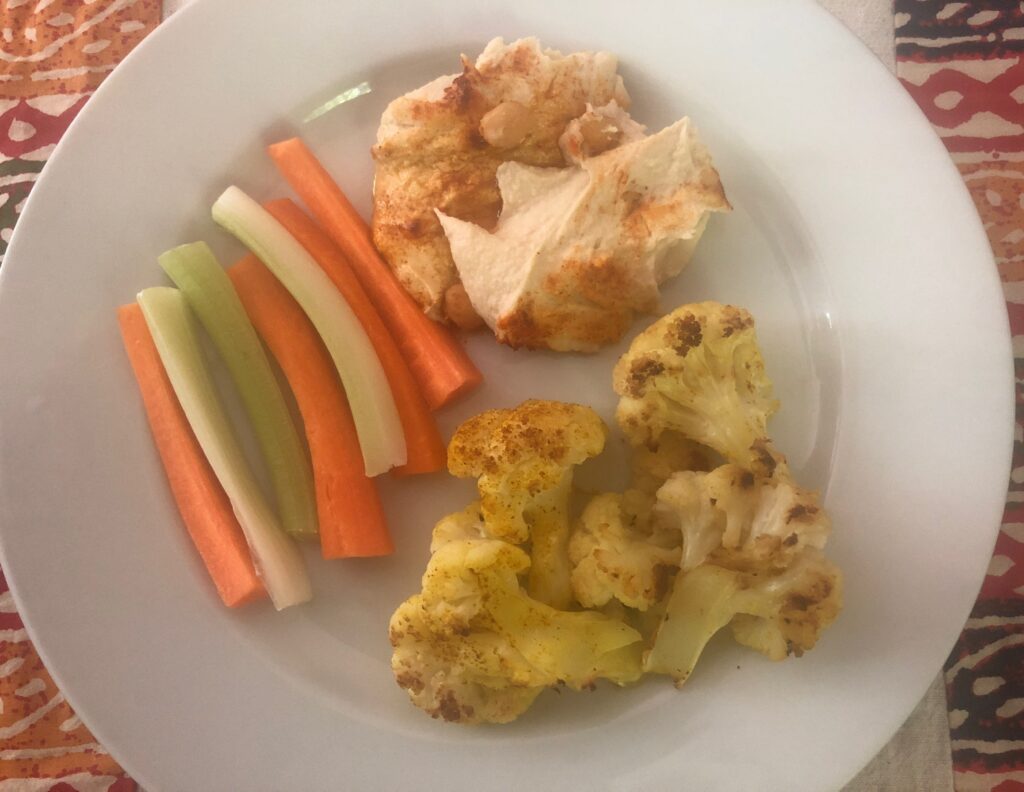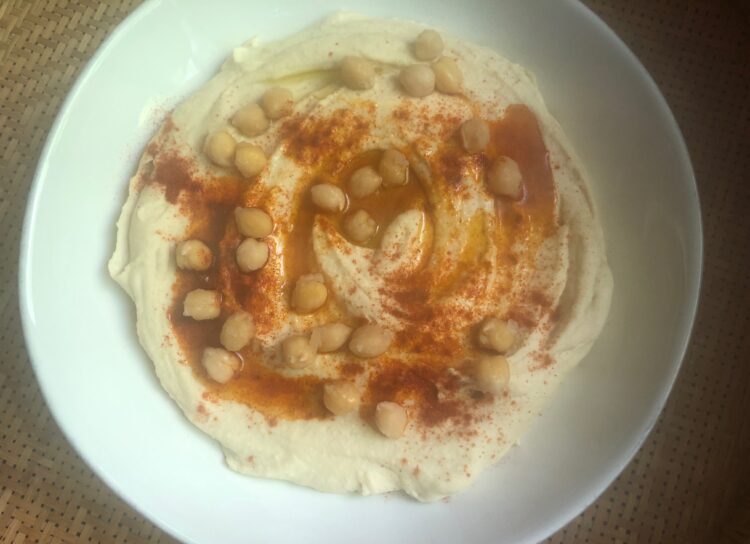It’s so easy to make this Middle Eastern classic, regardless of whether you start with dried chickpeas and cook them yourself, or if you are using drained canned chickpeas.
If you vote for the homecooked version, it’s a good idea to cook more chickpeas than what’s needed for this recipe. Leftover chickpeas will keep fine in the fridge up to 4 days, so later you can use them in soups, stews, or salads. They can also be frozen up to 4 months. Keep in mind that dried chickpeas will roughly double their weight once cooked.
This time, I started with 1 pound of dried chickpeas. I soaked them overnight in cold water. The next day, I drained them, put them in a pot, covered with water, added ½ teaspoon baking soda, and cooked over medium heat until the beans softened fully. I drained the chickpeas but reserved the cooking liquid, and measured out the amount that was needed for the hummus. I cooled the beans a little bit before making the hummus.
 cooked chickpeas – 1 pound (2½ cups)
cooked chickpeas – 1 pound (2½ cups)
garlic – 3 medium cloves, chopped
lemon juice – 3 tablespoons
tahini – 1/3 cup
olive oil – ¼ cup + some for drizzling
salt – 1½ teaspoons
paprika – 1 teaspoon, for garnish
Chop the garlic cloves and put them, together with the chickpeas (reserve a few to garnish), lemon juice, tahini, oil, and salt, in a food processor or blender. Blend until it becomes a smooth, creamy paste. Add some of the chickpea cooking liquid (or more oil or some water) – one tablespoon at a time – if it’s too thick. Taste and add more salt if needed (possibly some ground black pepper or ground cumin).
Spoon the hummus onto a serving plate. Drizzle some olive oil on it, sprinkle with paprika, and scatter the reserved whole chickpeas on top. Serve with pita bread, roasted cauliflower, or your favorite crudités.
Suggestions for other garnishes: chopped fresh parsley leaves, diced tomatoes, toasted pine nuts.

Akár száraz csicseriborsóból főzzük, akár lecsepegtetett konzerv csicseriborsót használunk, ezt a közel-keleti klasszikus ételt nagyon egyszerű elkészíteni.
Ha magunk főzzük a csicseriborsót, érdemes többet főzni, mint ami ehhez a recepthez kell. A maradék csicseriborsó akár 4 napig is eláll a hűtőben, így később felhasználható leveshez, raguhoz, salátához. Fagyasztóban 4 hónapig is eláll. Érdemes tudni, hogy főzéskor a csicseriborsó nagyjából megkétszerezi a súlyát.
Én ezúttal fél kiló száraz csicseriborsót használtam, amit egy éjszakára hideg vízbe áztattam. Másnap leöntöttem róla az áztatóvizet és friss, bő vízben, amibe fél teáskanál szódabikarbónát szórtam, közepes lángon teljesen puhára főztem. Ezután leszűrtem – a főzőléből félretettem egy keveset –, kimértem a hummuszhoz szükséges mennyiséget, és hagytam langyosra hűlni, mielőtt elkészítettem volna a hummuszt.
főtt csicseriborsó – 450 g
fokhagyma – 3 közepes gerezd, aprítva
citromlé – 3 evőkanál
tahini – 1/3 bögre
olívaolaj – ¼ bögre + egy kevés a tetejére
só – 1½ teáskanál
pirospaprika – 1 teáskanál (a díszítéshez)
A fokhagymagerezdeket felaprítjuk és a csicseriborsóval, citromlével, tahinivel, olajjal és sóval együtt, aprítógépben vagy turmixgépben, krémesre turmixoljuk. (Előzőleg félreteszünk néhány szem csicseriborsót a díszítéshez). Ha túl sűrű lenne, hozzáadunk egy-két kanálnyit a csicseriborsó főzőlevéből, esetleg kevés olajjal vagy vízzel hígítjuk. Közben kóstolgatjuk és ízlésünk szerint fűszerezzük (sóval, de adhatunk hozzá őrölt borsot vagy római köményt is).
Egy tálra kanalazzuk a hummuszt, egy kevés olívaolajat öntünk rá, meghintjük pirospaprikával, majd rászórjuk a félretett csicseriborsót. Pita kenyérrel, pirítóssal, sült karfiollal vagy felszeletelt nyers zöldségekkel tálaljuk.
A tetejét díszíthetjük apróra vágott friss petrezselyemmel, kockára vágott paradicsommal, pirított fenyőmaggal is.





